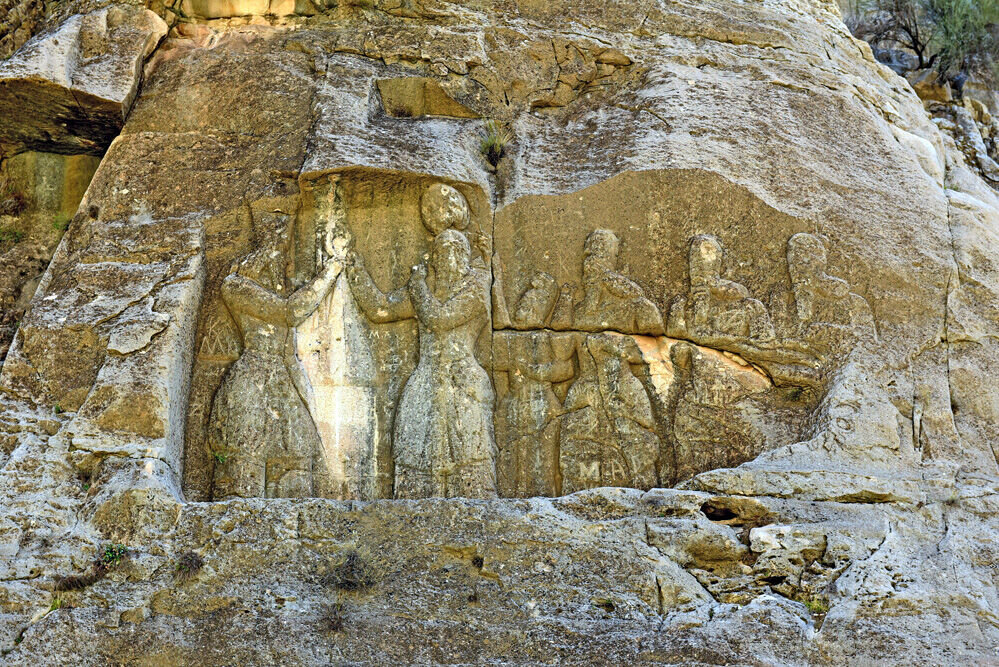Sassanid bas-relief in Firuzabad undergoing preservation project

TEHRAN - The Cultural Heritage, Tourism, and Handicrafts Department of Fars province has announced a new restoration and preservation project for an ancient Sassanid bas-relief located in the Tangab Valley of Firuzabad.
The project, intended to protect the invaluable rock-carved relief from environmental damage, was announced by Mohammad Sabet Eqlidi, the head of the department, during his visit to the site on Friday, IRNA reported.
The bas-relief, registered on Iran’s national heritage list in 1936, is called Naqsh-e Piroozi, or the Rock Relief of Ardeshir’s victory. It portrays Ardeshir Babakan’s victory over Ardavan V in battle using all the characteristics of Sassanid rock carvings. This relief also makes clear the actual condition of the figures, their angles, and the level of detail that was paid to them.
This intricate artwork, one of the largest bas-reliefs in Fars Province, is part of the larger "Sassanid Archaeological Landscape of Fars Region," which was recognized by UNESCO as a World Heritage site in 2018.
Sabet Eqlidi highlighted the cultural and historical significance of the Tangab Valley carving, noting that the restoration project, with a budget of over 723 million tomans (approximately $12,000), is essential for safeguarding the site from potential environmental damage.
He also emphasized the need for proper preservation methods due to the carving's antiquity and its prominent status in Sassanid art and history.
The Sassanid Archaeological Landscape encompasses various historically significant sites, including Ardashir’s Palace and the Ghal’eh Dokhtar fortress in Firuzabad, the ancient city of Bishapur, and other notable relics from the Sassanid era in Sarvestan and Kazerun. These sites, spanning three counties, demonstrate the cultural and artistic advancements of the Sassanid Empire, influenced by earlier Achaemenid, Parthian, and Roman traditions, and later inspiring the architectural and artistic developments of the Islamic period.
The Sassanid epoch is of very high importance in the history of Iran. Under the Sassanids, Persian art and architecture experienced a general renaissance. Architecture often took grandiose proportions, such as some palaces located in Ctesiphon, Firuzabad, and Sarvestan, which are amongst the highlights of the ensemble.
Crafts such as metalwork and gem engraving grew highly sophisticated, yet scholarship was encouraged by the state. In those years, works from both the East and West were translated into Pahlavi, the language of the Sassanians. The Sassanid archaeological landscape also represents a highly efficient system of land use and strategic utilization of natural topography in the creation of the earliest cultural centers of the Sassanid civilization.
AM
